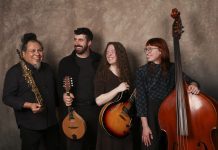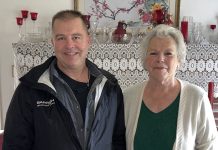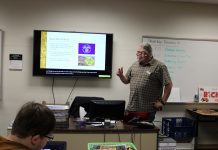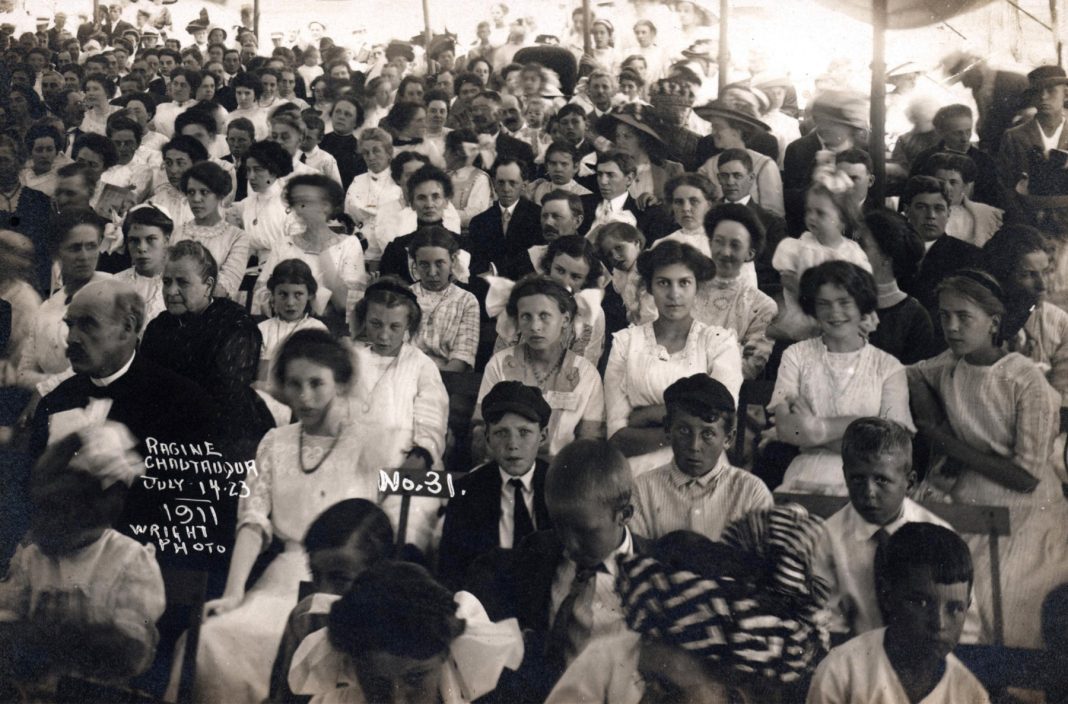At the turn of the 20th century, Whatcom County was in the path of a movement Theodore Roosevelt once called “the most American thing in America.” This was Chautauqua — a nationwide entourage of lecturers and entertainers that revolutionized adult education.
The movement started in 1873 with Methodists in Chautauqua, New York, emulating public lectures of the Lyceum movement. It soon integrated entertainment — rivaling vaudeville into the 1890s.
“The idea, it started to spread all over the country,” says New Old Time Chautauqua co-founder Paul Magid. “Soon, there were what I call place-based Chautauquas in every state of the union, including Washington state. And there started being Chautauqua bureaus; agencies where you could book lecturers and politicians.”
Thousands of these for-profit organizations would hold “Chautauqua Weeks,” where “first day” lecturers and entertainers traveled each day to a new city that would see a new lineup the following day. Bellingham saw repeated visits through the 1910s and ’20s, and Birch Bay had its own Chautauqua from 1909 to 1912. Thousands locally joined millions nationally in festivities that shaped the face of lifelong learning.
Chautauqua in Birch Bay
Chautauqua attendees visited Birch Bay by steamboat in Bellingham Bay and the Great Northern Railway in Blaine. A May 1909 Bellingham Herald article declared that “Birch Bay is destined to become the finest resort on the mainland of the Northwest.”

“The idea was that you would go to an idyllic place — it wasn’t like you would hold them in the town,” says Magid. “Initially, you would hold them in some place that was naturally beautiful and inspiring. And people would come there and — certainly at Birch Bay — the idea was that most people would camp.”
The Herald reported “five hundred campers and as many visitors” in July 1911. Organizers in the Pomona Grange of Whatcom County urged farmers to take time off to attend.
“When Chautauquas came into town, a lot of things stopped,” Magid says. “People stopped doing fieldwork or stopped fishing and came and attended Chautauqua to just better themselves. It was part of the self-betterment movement.”
Lectures connected attendees with issues on the national stage and in their own backyard — such as conversations on fishing, logging, and other local industries.
“That’s part of what made the Chautauqua so popular,” says Magid. “It not only brought you into the community of what was happening throughout the country, but it brought you into contact with people from all over the local area. You’d actually be with them for about a week, camping and talking and hanging out and discussing local issues and what was going on and how to better improve the community.”
Advocacy on the Chautauqua Stage
Public figures such as Washington’s Governor Marion E. Hay and good roads advocate Samuel Hill spoke at the Birch Bay Chautauqua. Lecturers addressed the era’s national concerns, such as women’s suffrage and child labor laws.
“If you were going to be a politician, you had to speak on Chautauqua,” Magid says.

Emma Smith DeVoe, who successfully campaigned for women’s suffrage in Washington 10 years before its national ratification, was among the suffragists to speak at the Birch Bay Chautauqua.
“The Chautauqua was incredibly influential and instrumental in the suffragette movement,” says Magid. “There were almost a thousand Chautauquas traveling at that time and seen by 40 million Americans, which was about half the country.”
Chautauqua also platformed advocates for Native American citizenship and suffrage, nationally ratified in 1924. Nipo T. Strongheart of the Yakama Nation spoke across the country, receiving local support from the Lummi and Nooksack Peoples.

“Part of what makes the Chautauquas interesting is the local issues that were also featured on these stages,” Magid says. “It wasn’t just the governor of Washington state, it was also local professors and people who were interested in improving the community.”
Birch Bay’s Chautauqua went bankrupt and moved to Ferndale in 1912. The advent of radio, film, and new educational opportunities for women precipitated the national movement’s abrupt decline into the Great Depression.
Chautauqua Today
The Chautauqua movement has profoundly influenced successive movements in education.
“If you listen to National Public Radio or TED Talks or things like that, those are all coming out of the Chautauqua movement,” says Magid. “They’re all the same idea: We should basically bring together education and entertainment into this very American way of learning.”
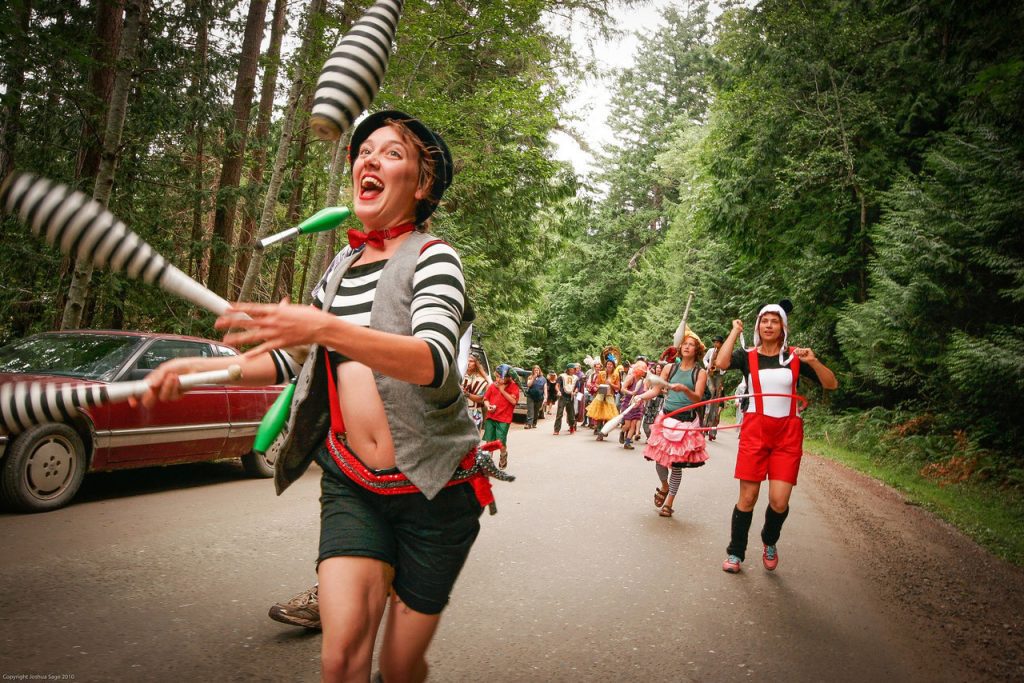
New York’s Chautauqua Institution has continued alongside numerous states’ place-based organizations. New Old Time Chautauqua, the only modern traveling group, retraces the Chautauqua circuit in Whatcom and adjacent counties.
“Our Chautauqua is different in that we’re a 501(c)(3). We’re a not-for-profit organization, an all-volunteer intergenerational group of people,” Magid says. “So we do this as a way to give back to our community in the greater northwest, and we’ve been doing it since 1981 when we were founded based on the ideas of the old traveling Chautauquas.”
New Old Time Chautauqua regularly collaborates with local cities and native nations on service projects, benefit events, and public advocacy. Through its modern revivals and continuations, Chautauqua still finds a voice.



